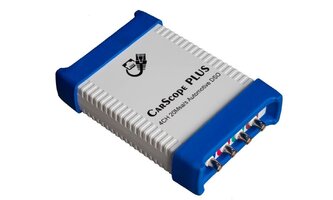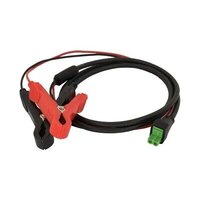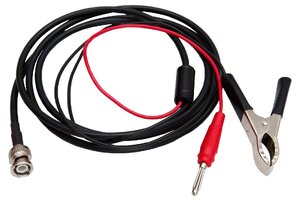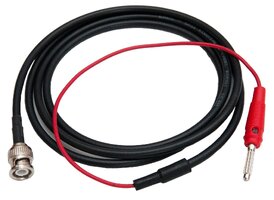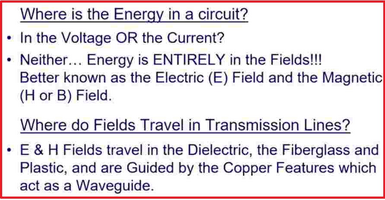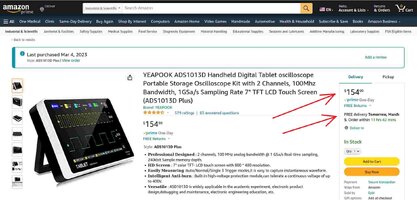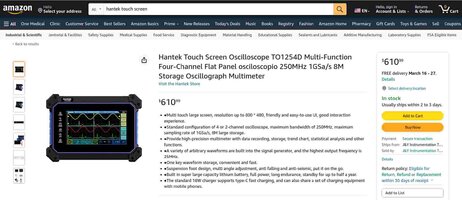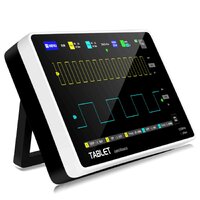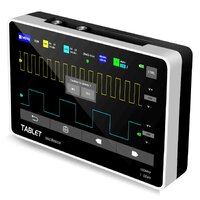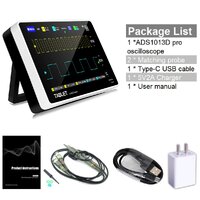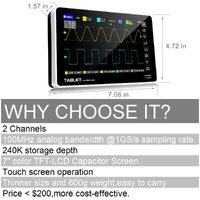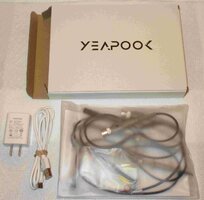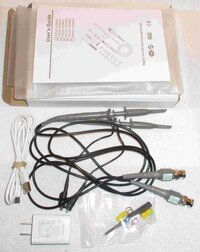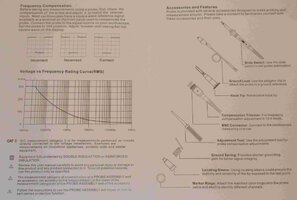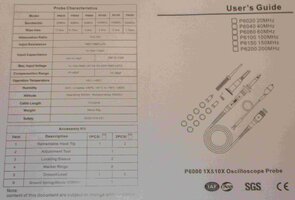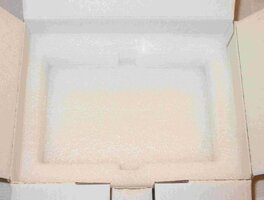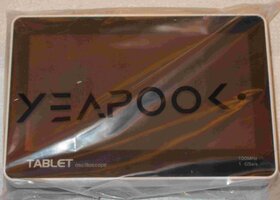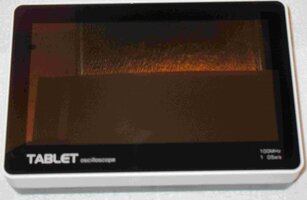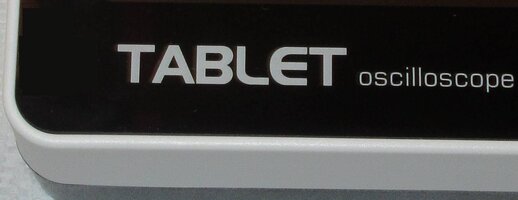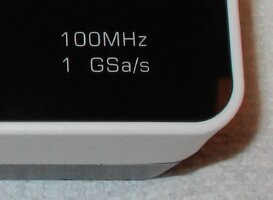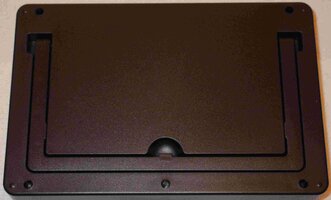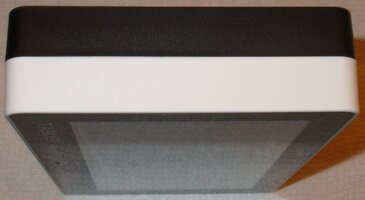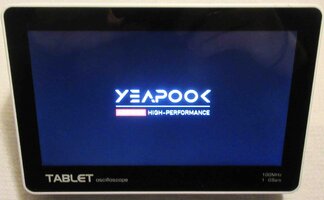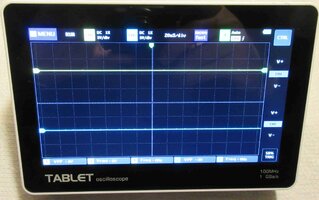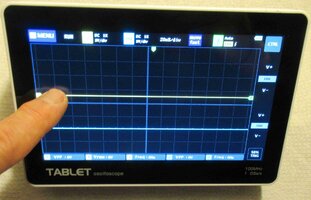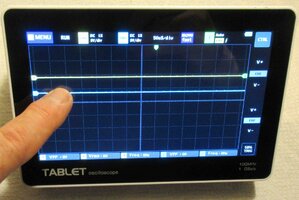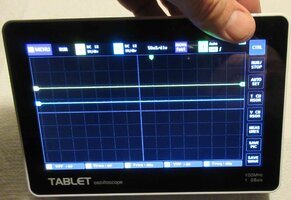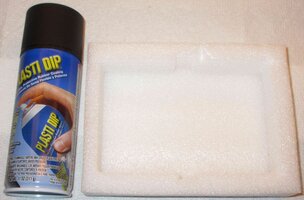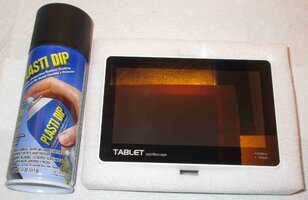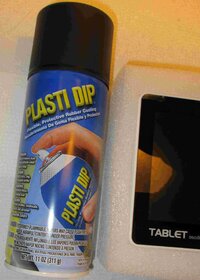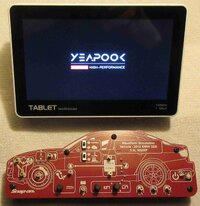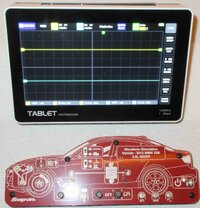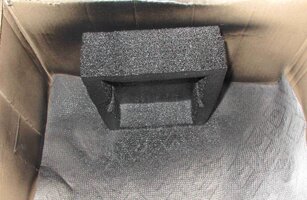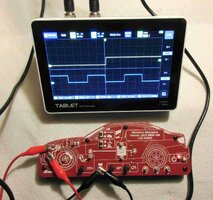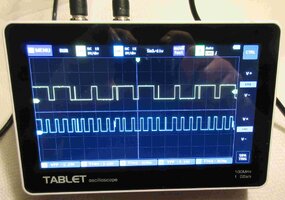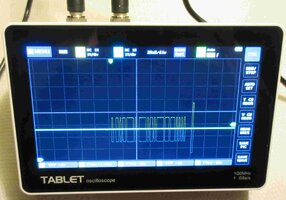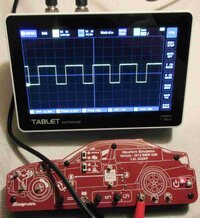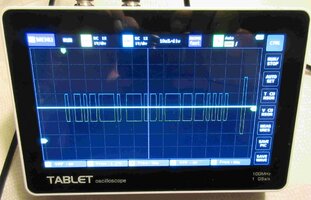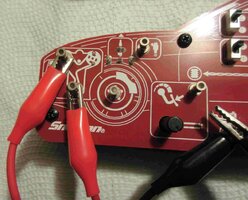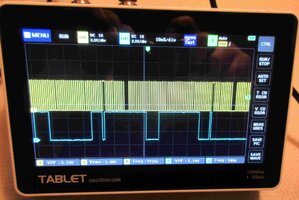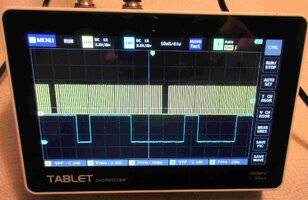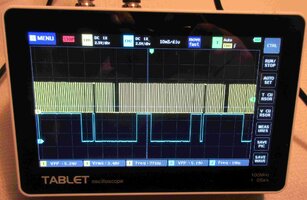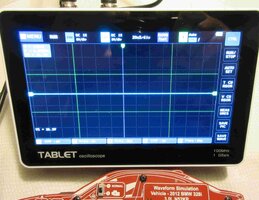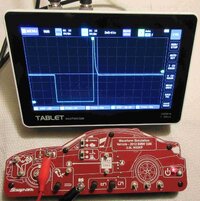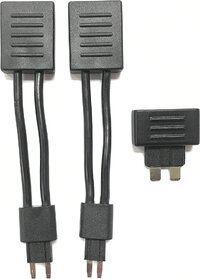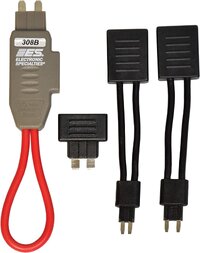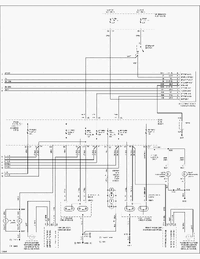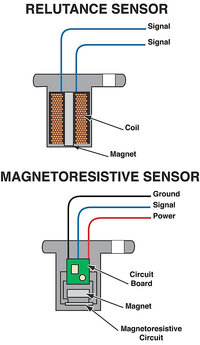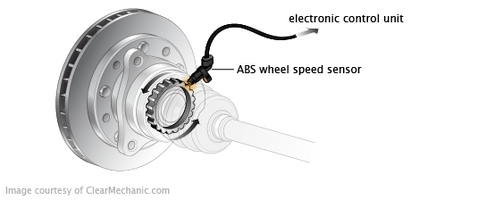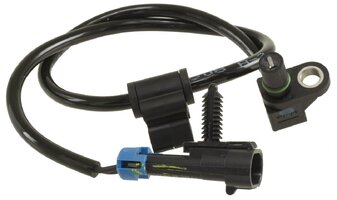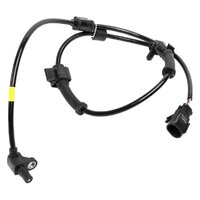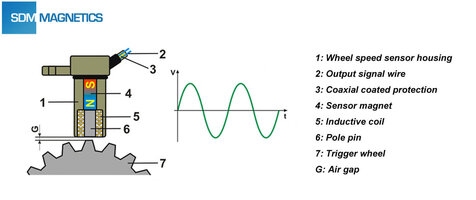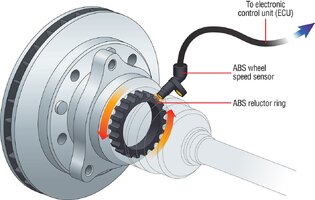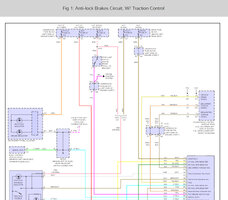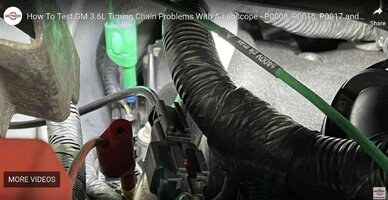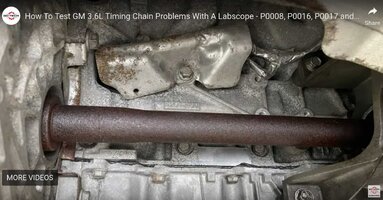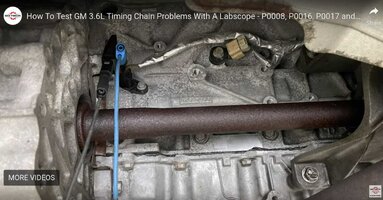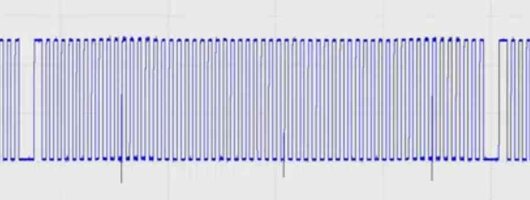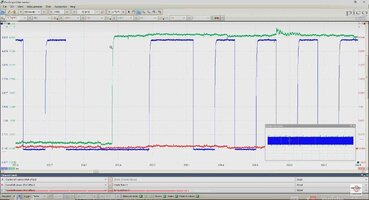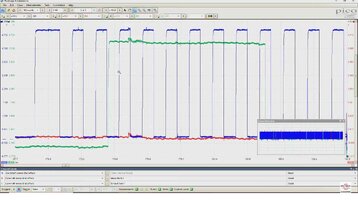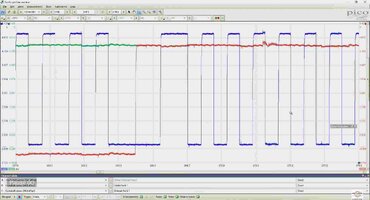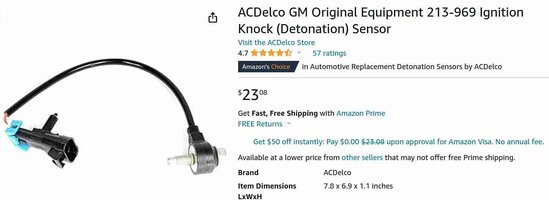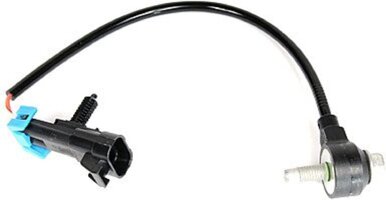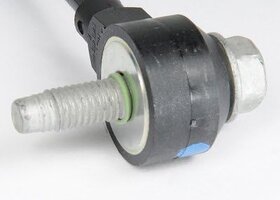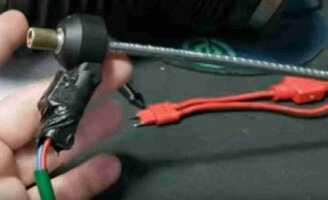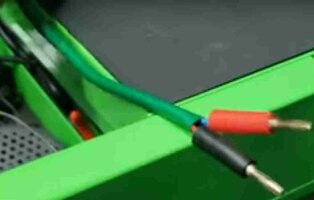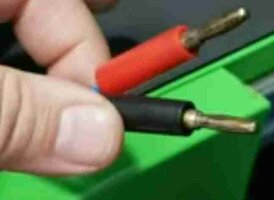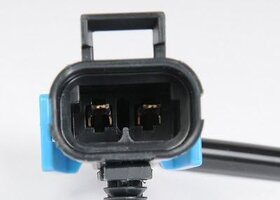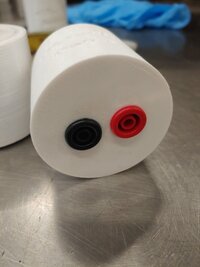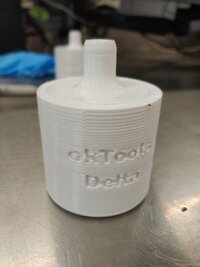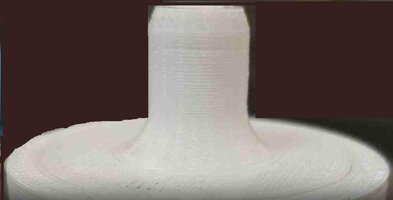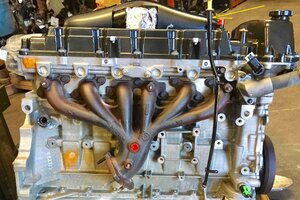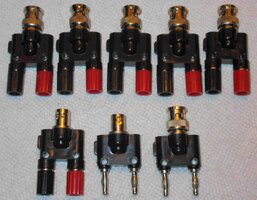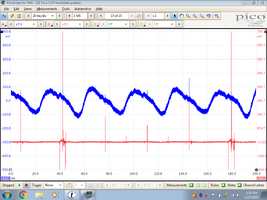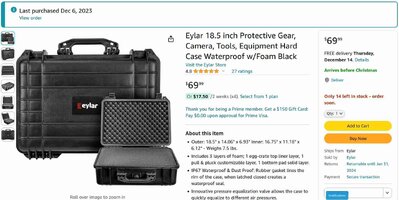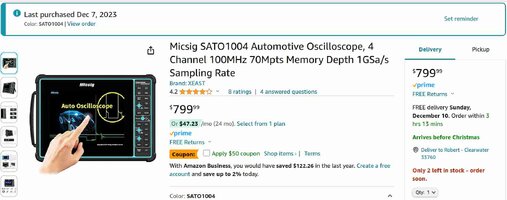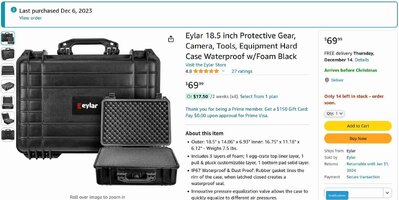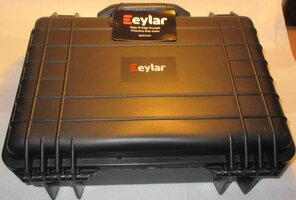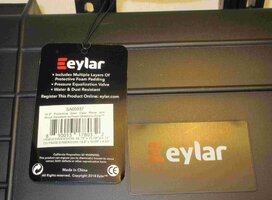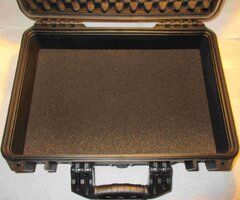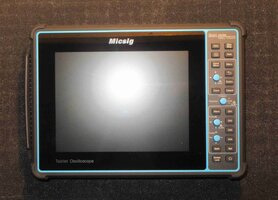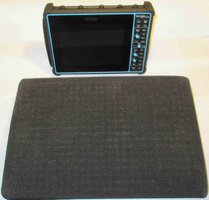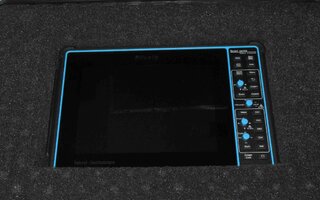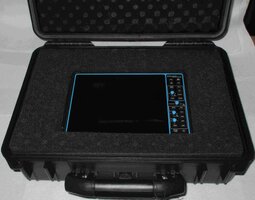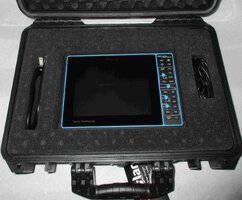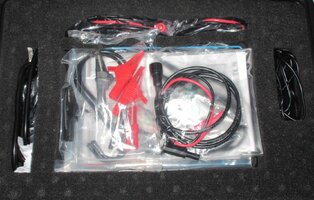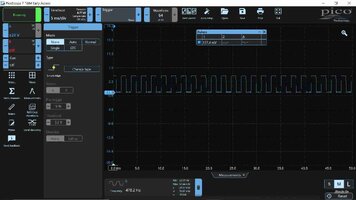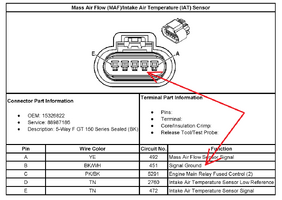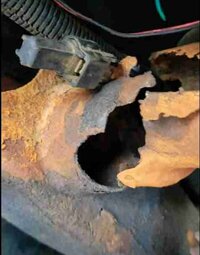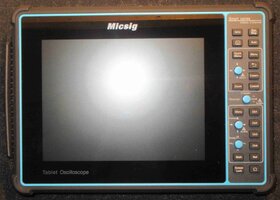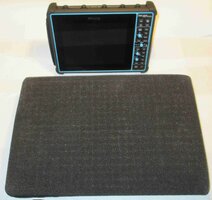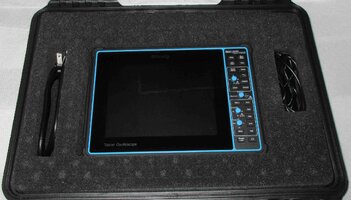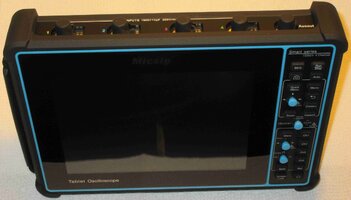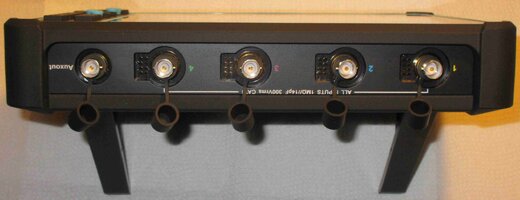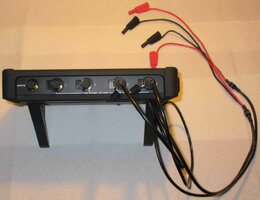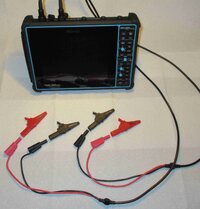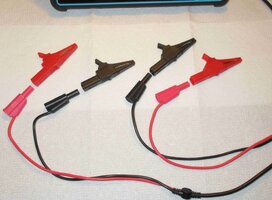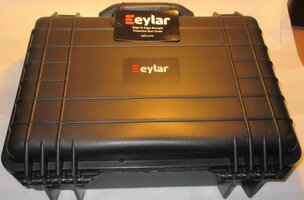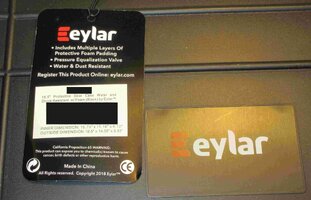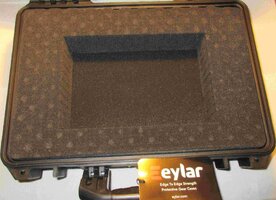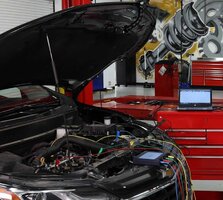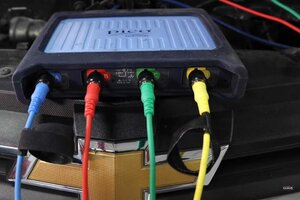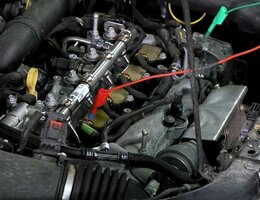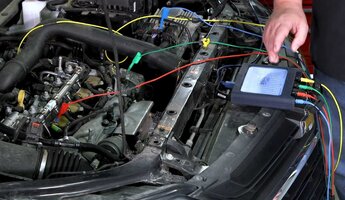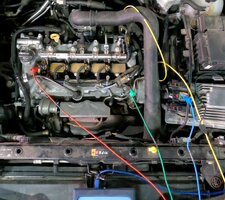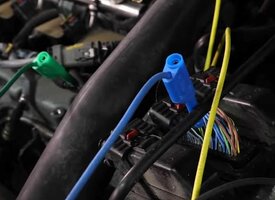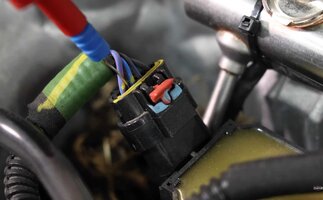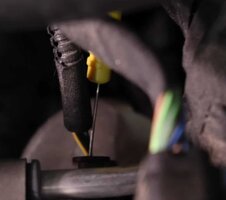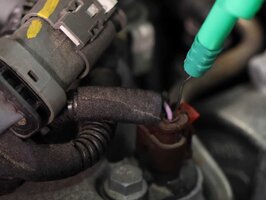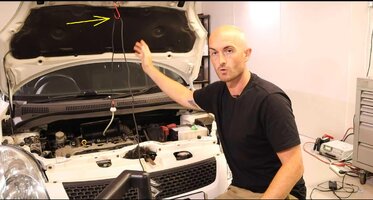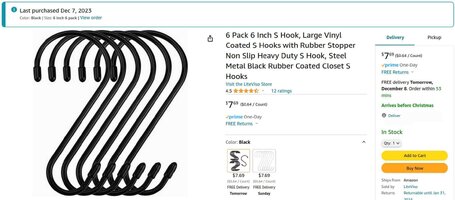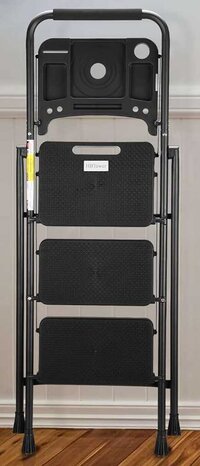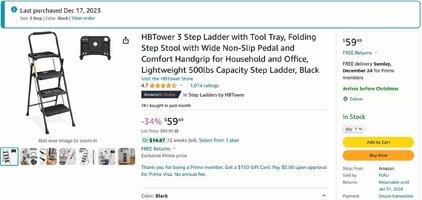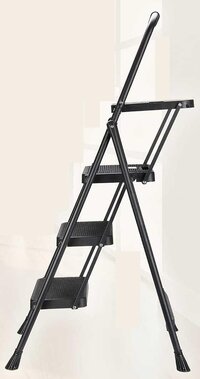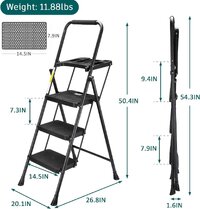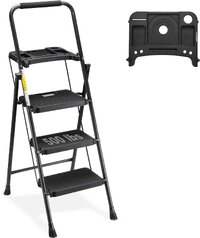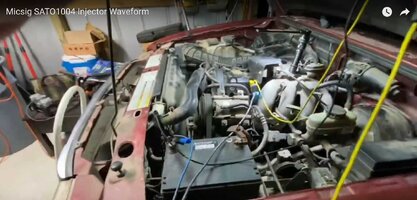Remember what we covered back in Post #18 with Paul "Scanner" Danner? No? Well...since it is a complete Weather FUBAR'd Rainy Day and you probably have some spare time ...
and perhaps NO OSCILLOSCOPE (Yet)... Let's review what happens when your Wife pulls up in her Favorite Ride and suddenly complains about her SUV,
"Stumbling and Missing when I'm sitting a Red Light..." and she finishes with her annoying, inevitable ultimatum,
"FIX IT!"
So ...sure enough, you traipse out into the Garage and you
"Put a Scanner On It". And ...What does it tell you by way of a Basic List of Trouble Codes?
"P0305". Okay... So you remember what causes THIS Trouble Code, right?
Sure you do... and now you tell The Lil' Woman with complete confidence,
"Honey... You See... The Problem is that you have a Misfire on the Number Five Cylinder. and ..." Right then, She replies,
"Great, Dear... Did you FIX IT?" Long Pause... and then you fess up to her, "Err No, Honey... Not Just YET... You see I... " Then She interrupts and retorts, "Honey... I Don't Care... JUST FIX IT!"
And now we can zone in on the
REAL Issue here...which is that the Basic Scan Tool can provide Definitions and Possibilities using Trouble Codes...and
FAIL completely with trying to explain
WHY The Trouble Code is occurring. And even if you are familiar with
SOME of the issues that
might cause any P0300 to any P0301-P0308 Trouble Codes to Throw... you'll probably will just wind up doing the predictable things like Changing the #5 Spark Plug or Swapping the Coil Over Plugs between Two Cylinders to see if the problem drifts to the alternate location.
But these approaches will NOT work today because there is nothing wrong with any aspect of the ignition system. And this is where things get more interesting because we move now from the realm of Obvious Parts Swapping ...into the Land of The Diagnostic UNKNOWNS. So for a while...you stand there,...Scratching your Noggin' and decide to pull up a chair at your Computer and drop in HERE at GMT Nation.
From there, you may start plowing through a few dozen "P0300" Threads that branch off into long speculations about
"Vacuum Leaks" and
"Bad O2 Sensors" or perhaps an
"Un-plugged MAF" and so forth, and you will STILL wind up right back in the Garage... Scratching you Noggin'.. because in
THIS instance, without the assistance of an Oscilloscope... you will NOT likely settle upon the ACTUAL cause and origin of the Mysterious Misfires happening inside of Cylinder #5:
So... How does it work if you
DO Have an Oscilloscope? Lets look over Paul "Scanner" Danner's Shoulder again and Watch this Video... and then we will Map Everything Out:
The ONLY Thing that an Oscilloscope does is display Voltage Over Time Events On Screen involving Probes Sensors, Modules and Components in such a was as Register WEIRD Electrical Patterns that are either GOOD Wave Forms...Or BAD Wave Forms.
The Clues are all there and they will ALWAYS TELL THE ABSOLUTE DIAGNOSTIC TRUTH. But First, You have to KNOW WHAT YOU ARE LOOKING FOR IN ADVANCE in order to interpret what you can see on screen with all those WEIRD, SQUIGGLY LINES. So... Let's Look at a Breakdown of Those Clues:
(1) First, "Scanner-Danner" confirms that he only has the ONE Cylinder that is persistently Throwing a Misfire Count on Cylinder #5 as per his Scan Tool:

(2) Next...HE USES THE OSCILLOSCOPE FEATURE OF HIS SNAP-ON VERUS SCAN TOOL and samples the Ignition Coil Secondary Wave Forms on ALL of the Cylinders as a PARADE...so he can COMPARE Cylinders 1,2,3,4,and 6 against Cylinder #5...BY SNAPPING THE THROTTLE and then watching for Changes in ALL of the Wave Forms in the Parade;

(3) Now...Since perhaps you have been reluctant to appreciate the Diagnostic Value of what an "O" Scope can actually DO for you by being able to describe what is HIDDEN but ACTUALLY HAPPENING Inside of Each Cylinder.... what those Yellow Lines are pointing to is the Firing K-V LINE that suddenly shortened in its Vertical Line Height...while at the same time the Lateral Spark LINE Shortened Horizontally and then it suddenly rose up to become almost as TALL as the Firing K-V Line On Screen. THIS will only happen when there is
NO FUEL IN THE UPPER COMBUSTION CHAMBER. The Strong Indication from this is that the EFI has a Dead Short Inside and is NOT Functioning, Ergo...? A "NO FUEL" MISFIRE is due to having a BAD EFI.
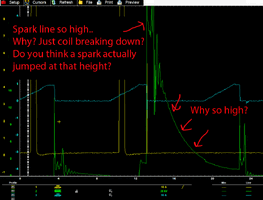
(4) The COP (Coil Over Plugs) or in the example in the Video...of a Waste Spark Event WILL STRESS THE SECONDARY COIL side while trying to Fire the Spark Plug if there is NO Stoichiometric Balanced Air to Fuel Ratio of 14.7 Parts of Air to 1 Part Fuel. The Spark Plug NEEDS the Compressed Combination that is Rich in Hydro-Carbons to better Conduct Electricity at the Spark Plug under HIGH COMPRESSION. Thus...When the Throttle is Snapped and the Throttle Body goes to WOT...the Change in the Spark Line occurs...
and the Problem is REVEALED!
Note that there is NO PINTLE HUMP present at the Red & Yellow Arrow Point:
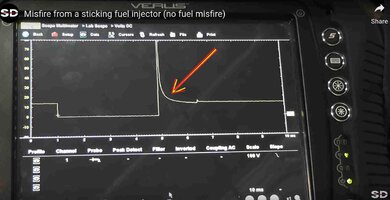
These Images provide a Better List of the Definitions of What make up the Secondary Ignition Wave Form and these should be SAVED for Future Reference in your "Mechanic's Multi-Media Library". :>)
Ignition Wave Form
 Ignition Wave Form
Ignition Wave Form
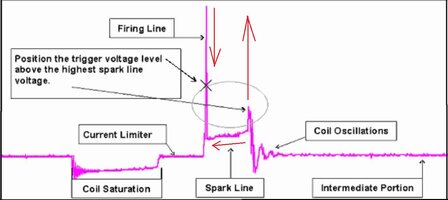
(5) And now... After you R&R the Damaged EFI and Use Your Scan Tool to Confirm the Fix...and Your New Oscilloscope to
Record and Share the Snap-Throttle EFI "KNOWN GOOD" Wave Form... You won't need to say anything further to the Lil' Woman other than...
"It is FIXED, Baby Sweet." After that, if you like the idea, you can come back to GMT Nation and Start Your Own "O" Scope
"How To Diagnose a Failed EFI using an Oscilloscope" Thread". :>)
Please Remember... any time your are Diagnosing COPs, EFIs or Solenoids... You MUST Protect your Oscilloscope by using a
20:1 Attenuator installed on the Scope Channel ahead of any Channel Lead (Probe) to mediate HIGH VOLTAGE SPIKES that can Damage your Equipment. Ooops... Almost Forgot...
NO PINTLE HUMP IN YOUR EFI WAVE FORM ON SCREEN MEANS IT IS STUCK CLOSED ...AND NOT WORKING!
This is a "KNOWN GOOD" EFI Wave Form:



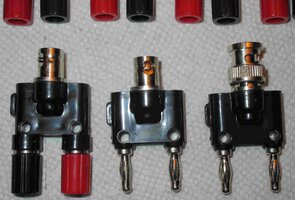






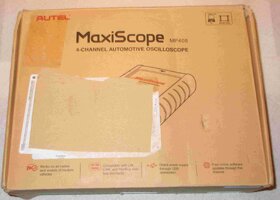

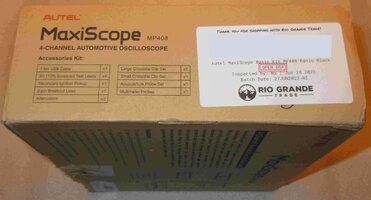
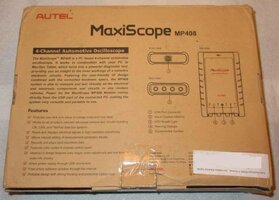

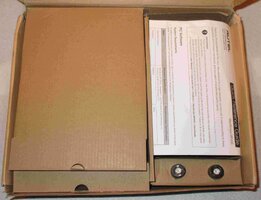
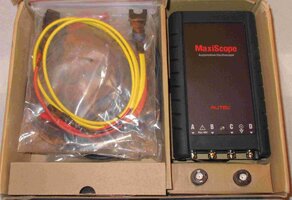
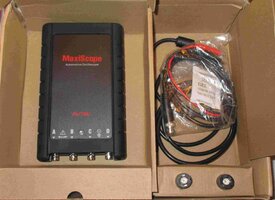
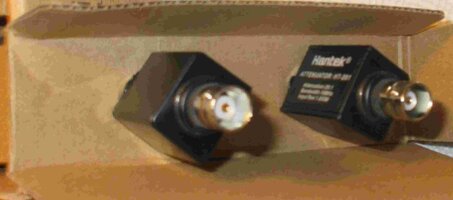


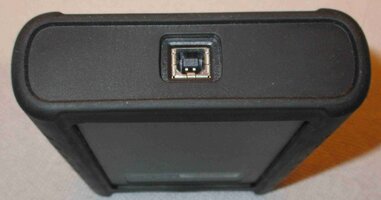
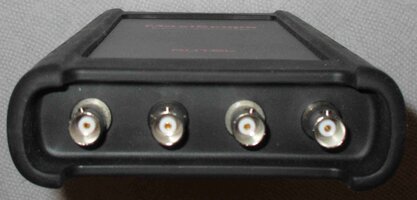

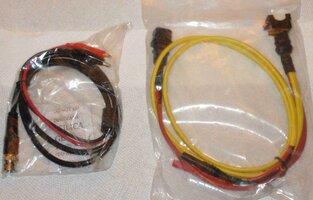

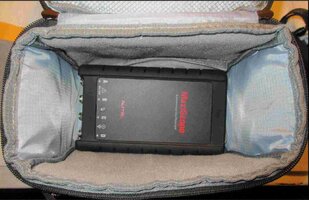



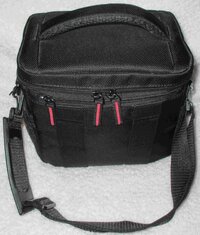
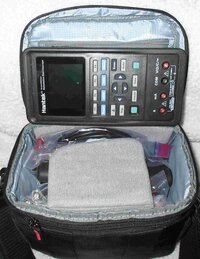
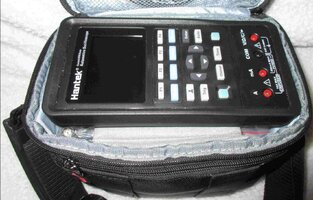
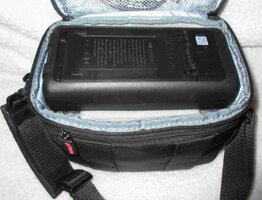
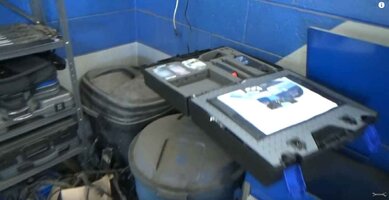
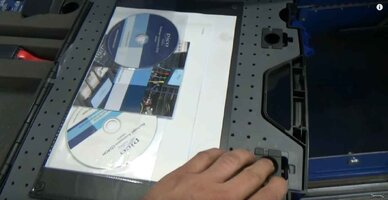
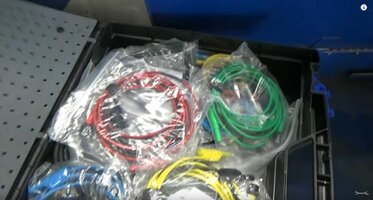
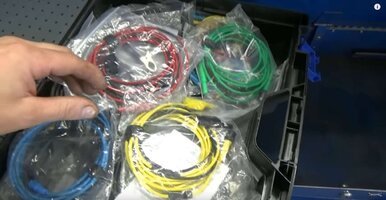
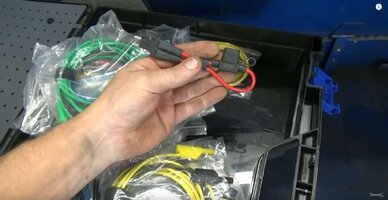
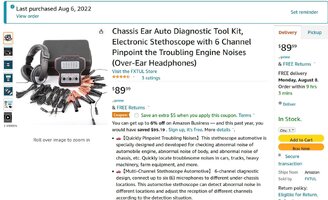
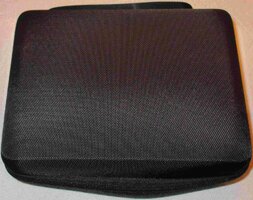
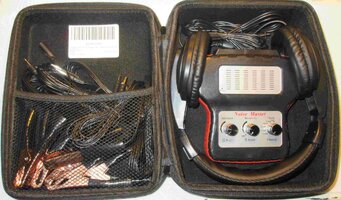
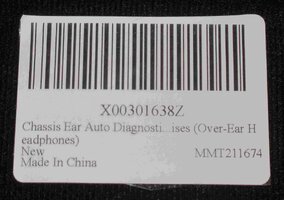
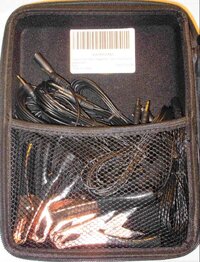
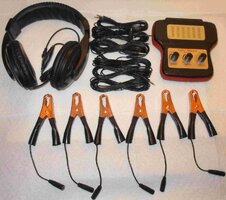
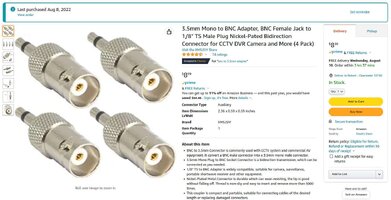
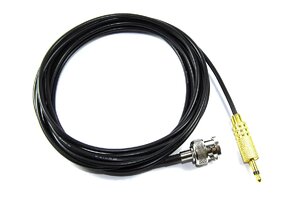

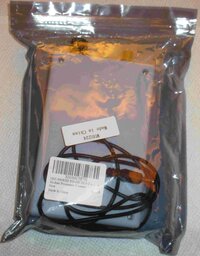
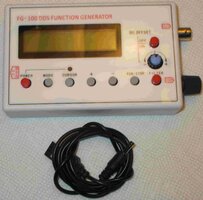
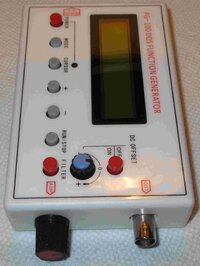
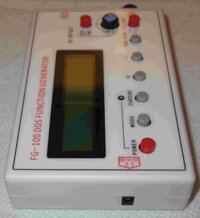

 hahaha!!!! EXCELLENT INSTINCTS SIR!!!!!!! THANK YOU!!!!!!!!!
hahaha!!!! EXCELLENT INSTINCTS SIR!!!!!!! THANK YOU!!!!!!!!!
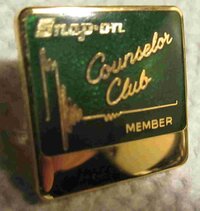
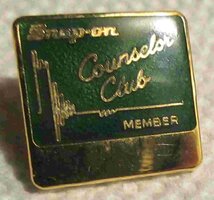
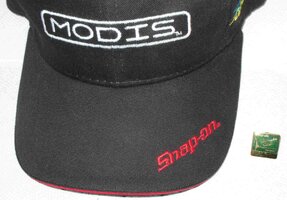
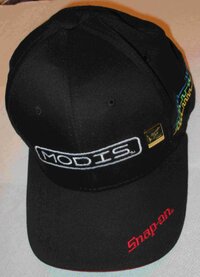

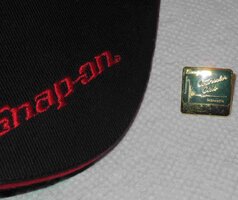
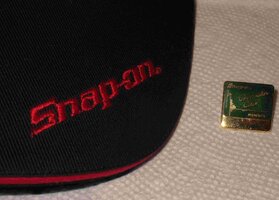
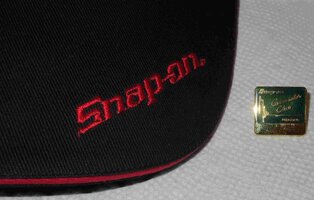




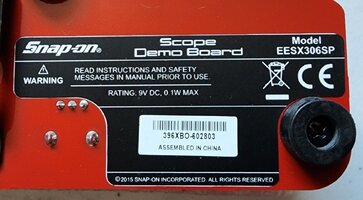
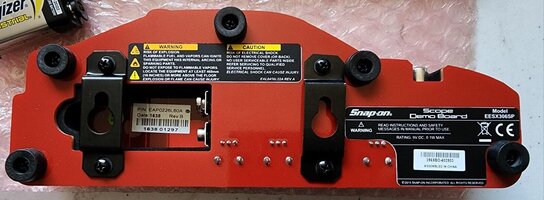



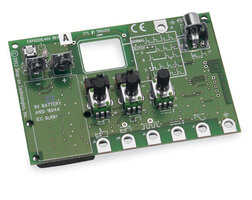
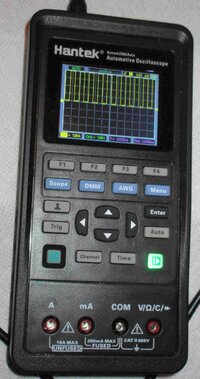
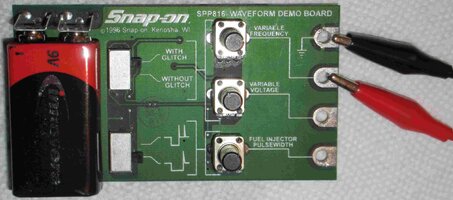
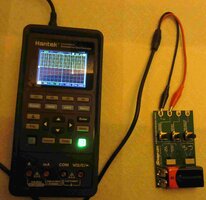
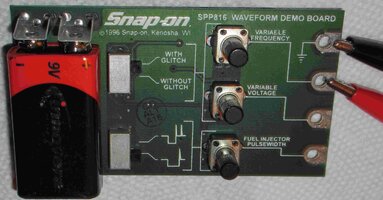


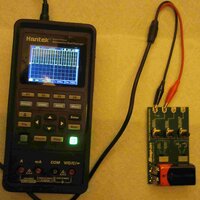

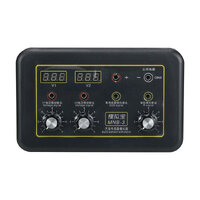
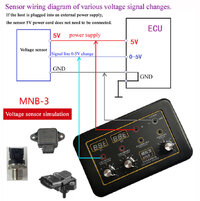
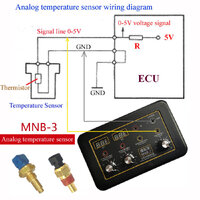
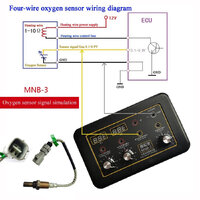
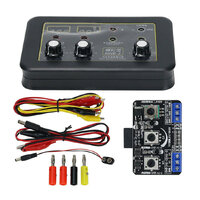
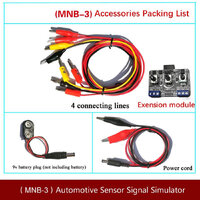
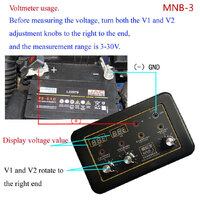
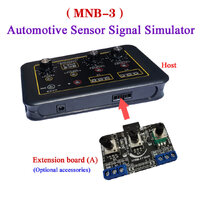


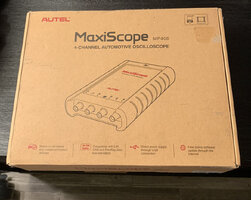
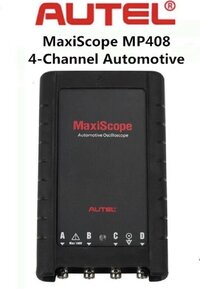
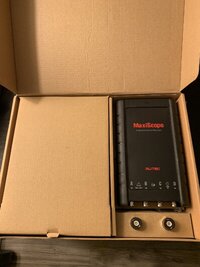
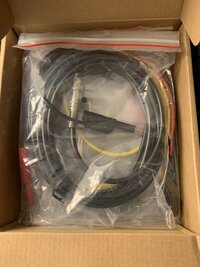
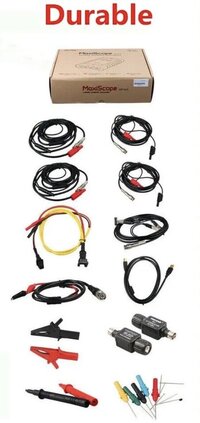

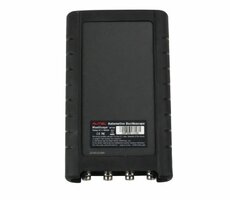

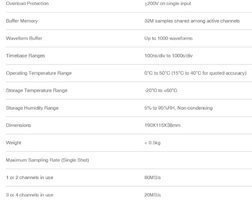
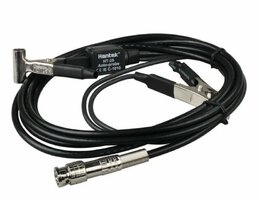
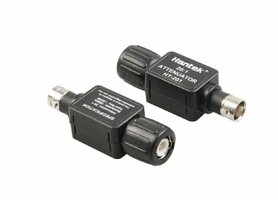
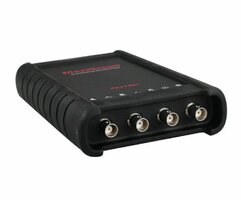
 I find ebay tough as there is always some "fake bidders" (I suspect usually associated with the auction "house") that try pushing things up. Anyway, good info which may come in handy in the future... hopefully my truck never falls totally down that path. Maybe the acceleration "lag" is a candidate, but its not high on the list of "to dos" just yet.
I find ebay tough as there is always some "fake bidders" (I suspect usually associated with the auction "house") that try pushing things up. Anyway, good info which may come in handy in the future... hopefully my truck never falls totally down that path. Maybe the acceleration "lag" is a candidate, but its not high on the list of "to dos" just yet.